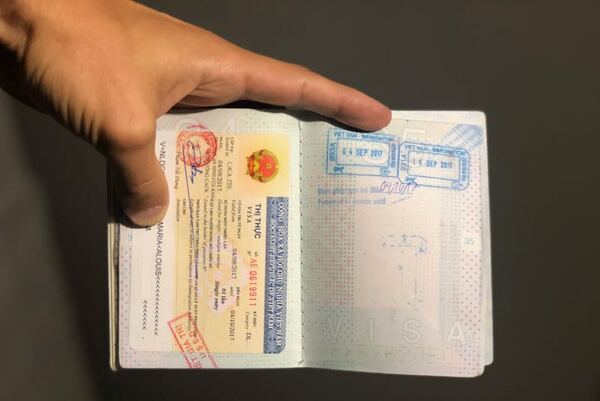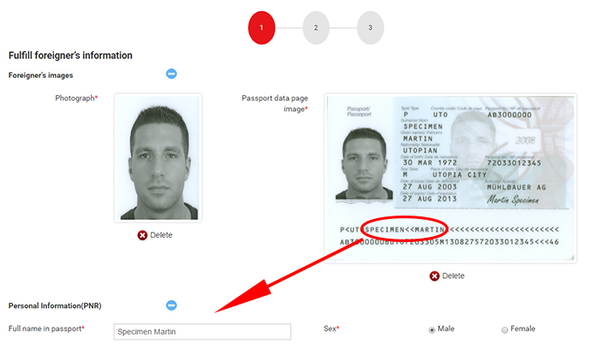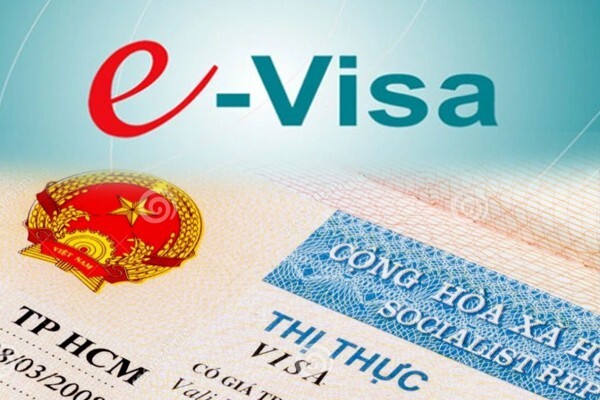- +84.904.879.729
- +1 (778) 788 2310
- Sat Jan 03 2026, 19:54:33 (GMT + 7)
Planning a trip to Vietnam? One of the first decisions you'll need to make is how to obtain your visa. With the introduction of e-visas and the traditional visa on arrival option, it's important to weigh the pros and cons of each to determine which is the best option for your trip. Now let’s learn about the difference between Vietnam E-Visa vs Visa on Arrival.
When planning a trip to Vietnam, it is important to understand the difference between Vietnam E-Visa vs Visa on Arrival. Vietnam offers various ways for travelers to obtain a visa and enter the country hassle-free.
One option is to apply for a Vietnam visa prior to your trip. This can be done through the Vietnamese embassy or consulate in your home country. The process typically involves submitting an application form, supporting documents, and paying the necessary fees. This option allows you to have your visa ready before you travel, giving you peace of mind and avoiding any potential delays upon arrival.
Another convenient entry option is the e-visa for Vietnam. This online system allows eligible travelers to apply for their visa electronically, eliminating the need for a physical stamp or sticker in their passport. The e-visa is valid for single entry and has a maximum stay of 30 days.

For those who prefer more flexibility, there is also the option of obtaining a visa on arrival in Vietnam. This means that upon arrival at one of the designated airports in Vietnam, you can apply and pay for your visa at the immigration counter. It is important to note that this option requires pre-approval through an authorized agency or sponsor before traveling.
Each entry option has its own requirements and procedures, so it's essential to research and choose the one that best suits your needs. Whether it's applying for a visa beforehand, opting for an e-visa, or securing a visa on arrival, understanding these different entry options will ensure a smooth journey as you explore all that beautiful Vietnam has to offer.
Related Blog Post: Single Entry Vs Multiple Entry Visa Vietnam
When it comes to traveling to Vietnam, obtaining a visa is an essential step for most visitors. In recent years, the introduction of the Vietnam E-Visa has revolutionized the visa application process, offering travelers a convenient and streamlined way to obtain their travel authorization.
One of the key benefits of the Vietnam E-Visa is its online application system. No longer do people need to wait in lengthy lines at embassies or consulates. With just a few clicks, travelers can complete their visa application from anywhere in the world, saving time and effort.
Another advantage of opting for an E-Visa is its ease and simplicity. The process is straightforward and user-friendly, requiring applicants to provide basic personal information and supporting documents electronically. Within a short period, applicants receive their approved e-visa via email, eliminating any need for physical documents or visiting government offices.
Furthermore, choosing Vietnam E-Visa vs Visa on Arrival offers peace of mind as travelers can enter Vietnam with confidence knowing that they have secured their travel authorization in advance. This eliminates any uncertainty or potential delays that may arise when applying for a visa upon arrival at Vietnamese airports.
However, it's important to consider some limitations associated with Vietnam E-Visas. Firstly, not all nationalities are eligible for this type of visa; therefore, it's crucial to check eligibility requirements before applying. Additionally, there may be restrictions on entry points when using an e-visa compared to Visa on Arrival options.
In summary, while there are several benefits to obtaining a Vietnam E-Visa such as convenience and ease of application process; it's essential for travelers to be aware of its limitations as well. By understanding these factors beforehand, individuals can make informed decisions regarding which visa option best suits their needs when planning their trip to Vietnam.
When it comes to choosing between a Vietnam E-Visa vs Visa on Arrival, there are several factors that you should consider. These factors include the purpose of your visit to Vietnam, the duration of your stay, and the entry points in Vietnam.
An e-visa offers convenience and ease of application. With an e-visa, you can apply online from the comfort of your own home or office. The process is streamlined and typically requires less paperwork compared to a visa on arrival. This is especially beneficial if you have limited time or prefer to avoid long queues at immigration checkpoints.

On the other hand, a visa on arrival allows for greater flexibility in terms of entry points into Vietnam. If you are unsure about which specific entry point you will be using or if your travel plans may change, a visa on arrival may be more suitable for you. It allows for greater freedom to enter through various ports of entry in Vietnam.
The purpose of your visit is also an important consideration. If you are visiting Vietnam for tourism or business purposes, both options may be suitable. However, if you plan on engaging in activities such as studying or working in Vietnam, it is advisable to check the specific requirements for each type of visa.

Lastly, consider the duration of your stay in Vietnam. E-visas typically have a maximum validity period ranging from 30 days to 2 years depending on type of the visa and nationality. Visa on arrival options often allow for longer stays with extensions available upon arrival.
In conclusion, when choosing between Vietnam E-Visa vs Visa on Arrival for your visit to Vietnam, carefully consider factors such as convenience, flexibility in entry points, purpose of visit, and duration of stay. By weighing these factors against your individual needs and preferences, you can make an informed decision that best suits your travel plans.
Both Vietnam E-Visa vs Visa on Arrival have their advantages depending on individual circumstances. It's important to assess what matters most to you when making this decision. Whether it's convenience or flexibility that takes precedence in your travel plans, rest assured that both options will allow you entry into this beautiful country known for its rich culture and breathtaking landscapes.
All contact information:
Hotline/whatsapp: +84.904.879.729
Email: [email protected]
Address: 101 Lang Ha street, Hanoi, Vietnam
Working Hour: Mon - Sun, 8:00am - 8:30pm
Should you extend your visa or leave the country? Get the latest regulations on Vietnam Visa Extension eligibility and the requirements (e-Visa) for Visa Run.
The best option for expats in Da Nang/Hanoi. See the required documents (e-Visa, photos), and costs for a fast and secure land border visa run to Laos.
Renew your Vietnam stay with the fastest land border run. Get the checklist for Moc Bai: e-Visa, photos, stamping fee, and step-by-step for the border crossing.